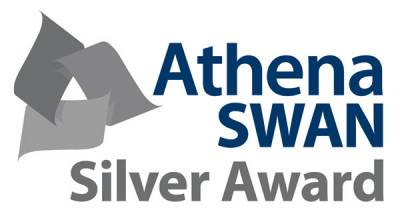M.D., B.Sc. (Med.), F.R.C.P. (C); F.R.C.P. (London) Born 1909 - Deceased 1986
At the age of 17 he started a course in Medicine at the University of Toronto from which he graduated in 1932. As an undergraduate he was awarded the David Dunlop prize in psychiatry. His interest in the brain sciences began as an undergraduate and was strengthened by an elective in neuroanatomy with Professor Eric Linell. He undertook an internship at the Toronto General Hospital thereby establishing an association with the hospital that continued throughout the rest of his life. He was then appointed to one of three senior internships in medicine under Professor Duncan Graham. This was followed by a year as autopsy fellow at the Banting Institute under Professor Oskar Klotz where he qualified for the B.Sc. (Med.). He decided to specialise in neurology and in 1935 came to the National Hospital for Nervous Diseases, Queen Square. After six months he became one of the few Canadians to be appointed house physician at the hospital, spending two years apprenticed to G M Holmes, J Purdon Martin, C P Symonds, Macdonald Critchley, and D E Denny-Brown. Part of this time was spent in neuropathology with Godwin Greenfield which led to his first paper, published in the Proceedings of the Royal Society of Medicine, on haematomyelia. In 1937 he took the Membership examination for the Royal College of Physicians of London and was elected to Fellowship in 1955.
In 1937 he returned to the Banting Institute as a fellow with Eric Linell who had recently established a Department of Neuropathology. During the year, he carried out pathological studies that served as the basis for the widely cited paper on cerebral aneurysm published with Herbert Hyland in Medicine in 1941. In 1938 he joined the staff of the Department of Medicine at the Toronto General as a clinical instructor in neurology and medicine. In January, 1940 he enlisted in the Royal Canadian Army Medical Corps and in June was posted to the No. I Canadian Neurological Hospital in Basingstoke, England. In 1942 with the rank of Lieutenant Colonel he became officer in charge of the neurological division of the hospital, later travelling to Europe as advisor in neuropsychiatry to several hospitals. While at Basingstoke, he collaborated with Hyland in a study of psychoneurosis in the military which was subsequently published in the Canadian Medical Association Journal. For his work at Basingstoke, he was awarded the M.B.E. in 1945.
On returning to Toronto in August, 1945 he re-established his practice in neurology and his appointment in the Department of Medicine at the Toronto General Hospital and continued to spend some time in neuropathology. With Drs. Hyland and Alan Walters, a Neurosis Unit was established at the Wellesley Hospital where he continued to be active until 1960. In 1946, he became certified in neurology and psychiatry by the Royal College of Physicians and Surgeons of Canada and was admitted to Fellowship. With Drs. Armour, Hyland and Walters, he was attached to the neurology service on Ward H until it was divided up among the public wards at the Toronto General in 1948. On the retirement of Dr. Hyland in 1960, Richardson became Head of the Division of Neurology and proceeded to establish the first comprehensive training programme for neurology in Canada. The programme was a model for the integrated specialty training programmes in medicine at the University of Toronto. In 1972, the special role of neurology within the Department of Medicine was recognised through the establishment of a Chair and Dr. Richardson became the first Professor of Neurology. He retired from his University post in 1975, continuing in active practice until the months before he died and maintaining his long standing interests in industrial neurology as a consultant for the Workmen's Compensation Board of Ontario and in medico-legal neurology.
Although his major academic contribution was the development of the training programme in neurology, he continued to publish clinical papers on a variety of subjects, including papers on post-traumatic syndromes, hypoglycemia and metabolic encephalopathies, aphasia, stroke and post-anoxic myoclonus. He is best known for the delineation of the distinctive degenerative brain disease "progressive supranuclear palsy" carried out with John Steele and Jerzy Olszewski.
Dr. Richardson was elected to membership of the American Neurological Association in 1947. He was a founding member of the Canadian Neurological Society, its first Secretary Treasurer and its President in 1954. He was Chairman of the Committee in Neurology of the Royal College of Physicians and President of the Medico-Legal Society of Toronto. In 1974, he was elected to Honorary Membership of the Association of British Neurologists. On his retirement he was honoured by his former trainees who endowed a University Lectureship in his name. In 1982 he received the Sesquicentennial award of the University of Toronto.
As much as any individual, "Ric" Richardson influenced training of neurologists in Canada. Beginning after the Second World War up to 1978 he took a very personal role in the instruction of trainees in the clinical discipline of neurology. Initially the trainees were "fellows" for one year who cared for his private patients in hospital and later residents in the integrated three year programme that he established at the University of Toronto. When he retired, four of his former trainees were directors of their own training programmes in Canada. His approach to teaching was largely influenced by his own teachers, in particular Duncan Graham, Charles Symonds and Gordon Holmes. Graham was remembered for his honesty, firm convictions, dedication and for his memorable clinical demonstrations in which students were repeatedly challenged. Above all, he was influenced by Holmes' ideas and approach during his time at Queen Square. He held the strong conviction that proper teaching of neurology necessitated total immersion in a dedicated neurology service. No matter one's prior clinical experience, neurology could only be learned by a return to the basics of individual comprehensive history-taking, meticulous physical examination and accurate concise recording of clinical data. Patient workups were to be submitted to detailed and critical review, not by a slightly more senior trainee but by expert faculty with subsequent discussion of the anatomical and pathophysiologic formulation. This approach required a disciplined service and teaching faculty where patients and trainees were well known. All of Dr. Richardson's trainees spent several months under his direct supervision, usually in the first year of the programme. The central events were his Wednesday and Saturday morning clinical teaching rounds beginning sharply at 8 o'clock. The selected trainee assembled X-rays and EEGs, presented the new admissions to be checked in detail by Dr. Richardson and reviewed the progress of old patients. The rounds lasted two hours and were serious and workmanlike. At the end, there was coffee, small talk and a sense of accomplishment (and relief) for the trainee in the limelight. Dr. Richardson would then check the written histories and write his own notes. In subsequent rounds, he would return with references for the trainee to read and search. He remained active clinically until a few months before his death, participating in rounds and maintaining an active interest in the neurology programme.
 Close
Close



